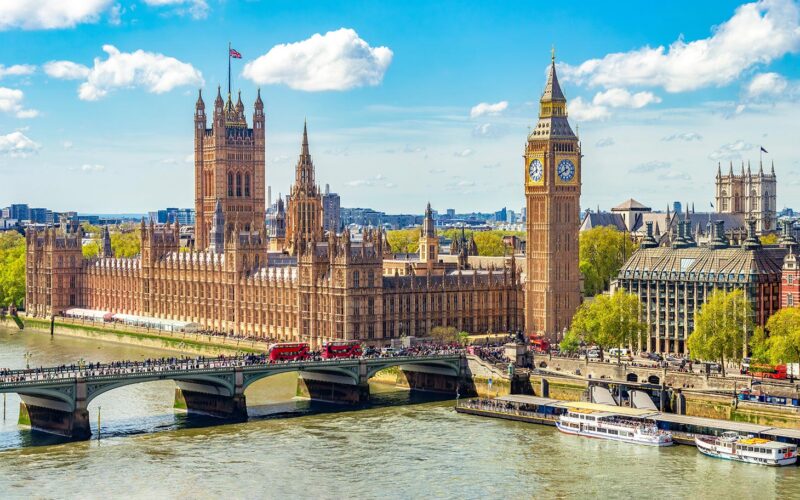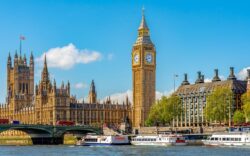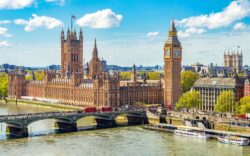In today’s issue:
- Was net zero like our net migration target?
- Without net zero, what follows?
- The electrification trend is rolling on
Was net zero just another government programme? Destined to be abandoned and forgotten long before it could even fail officially. History is littered with similar examples… Hopes, dreams and election promises that never went anywhere.
Were net zero targets no better than the Conservatives’ net migration targets?
Is eliminating carbon like flattening the curve during Covid?
Did net zero stand the same chance of success as a major infrastructure project in modern Britain?
Did it run out of other people’s money faster than socialism?
Will Mark Carney’s group of banks and central banks taking on climate change turn out to be as ill-fated as targeting the money supply to control inflation?
Of course, the inevitable failure of government programmes is a scientific fact. Heck, the science says government programmes make problems worse, not better. Economists call it the Cobra Effect.
And if offshoring our energy-intensive industry to China is anything to go by, cutting carbon emissions in the West may be another example of the Cobra Effect in action. Indeed, global coal demand hit another record last year, so that hasn’t worked out well either.
While the failure of net zero is now abject, the net zero law is still on the books of course. But who follows the law anyway? And what stops it from being changed quietly?
The Wall Street Journal reckons 2025 could make the collapse of net zero official:
Whisper it, but 2025 may be the year net zero dies. Such a development isn’t inevitable, but what was once described as “the climate crisis” is morphing into the climate-crisis crisis as voters lose patience with the project and grow less shy about saying so. The evidence is all around us.
That may be true. But while the collapse of net zero is growing ever more obvious, what it really means for us is not yet clear.
Are we going back to fossil fuels? Will electrification continue? Will energy-intensive industry come back? Can nuclear save us? Will producing fossil fuels be OK in the meantime? Will gas boilers and fossil fuel cars be acceptable or not?
None of the questions created by net zero’s demise have been answered yet. So…
What should investors make of net zero’s demise?
Net zero was supposed to define the rest of my working life. Being told it’s suddenly not on is a rather radical shift.
It wasn’t clear we’d have airports anymore, let alone jet-set holidays, under net zero. My kids risked growing up without seeing most of their grandparents.
Most of my favourite food would’ve been banned. And the house would need some serious rewiring to make room for the electrification of everything in it.
Of course, none of this was ever going to stand up to democratic scrutiny. Let alone the cost to struggling government budgets. Or very real resource constraints.
But we’d hoped the net zero delusion would stick around for a while longer. It certainly created some exceptional investment opportunities.
But the green bubble never recovered from when it burst in 2021. Commodity markets in particular never even came close to pricing in a genuine attempt at net zero. Markets were ahead of the political game on that one!
At the moment, the energy shortages caused by net zero efforts are fuelling the inflation that’s undermining net zero projects. It’s incredibly ironic. But it’s not particularly helpful to investors.
So, with net zero on the out, what’s in? What’ll replace the truly vast changes that were supposed to be coming our way over the next 25 years?
Uncertainty dominates
As renewable and hydrogen projects fall by the wayside faster than DEI programmes, we should all be asking ourselves where the energy of the future is going to come from. That’s the investment opportunity.
The world’s big tech companies are not waiting around to find out. They believe the answer is nuclear. And they’re not just placing their bets in financial markets either. Nor are they simply connecting to local nuclear power stations in an attempt to secure power supply. They are building their own small nuclear power plants known as small modular reactors (SMRs).
This marks a radical shift. It simply evades politics and government interference.
It also tells us that tech companies have a very low opinion of how well the power grid will serve us in coming years.
If they need their own SMR to keep the lights on, where does that leave the rest of us?
While the issues with SMRs are still challenging, it’s worth noting that this is how technological progress tends to occur. Those with whopping budgets and desperate need adopt tech first. Then it filters down to the rest of us.
So, we may really be on the cusp of a nuclear renaissance at last. One driven by the private sector, not the government.
And that would imply the electrification trend is still on, even without a strict net zero constraint.
But nuclear would take rather a lot of time. And while electricity demand is set to grow, fossil fuel generation is still being shut down. What can fill the gap?
Well, the net zero agenda left a suspicious amount of room for gas power generation. Something had to back up all that wind and solar, after all.
But gas power can run as far more than a backup. And so that’s what we expect to occur. A boom in liquefied natural gas (LNG) big enough to fill the hole being blown in renewable energy right now.
LNG import terminals are being proposed from Australia to Hokkaido. The Europeans bought record amounts of Russian gas in 2024 and are using it up like there’s no Ukraine right now. Trump is urging Sir Keir Starmer to drill baby drill.
If you believe 2025 will be the year that net zero falls by the wayside officially, then you should be betting on gas and nuclear. Here’s how.
Until next time,
Nick Hubble
Editor, Fortune & Freedom



